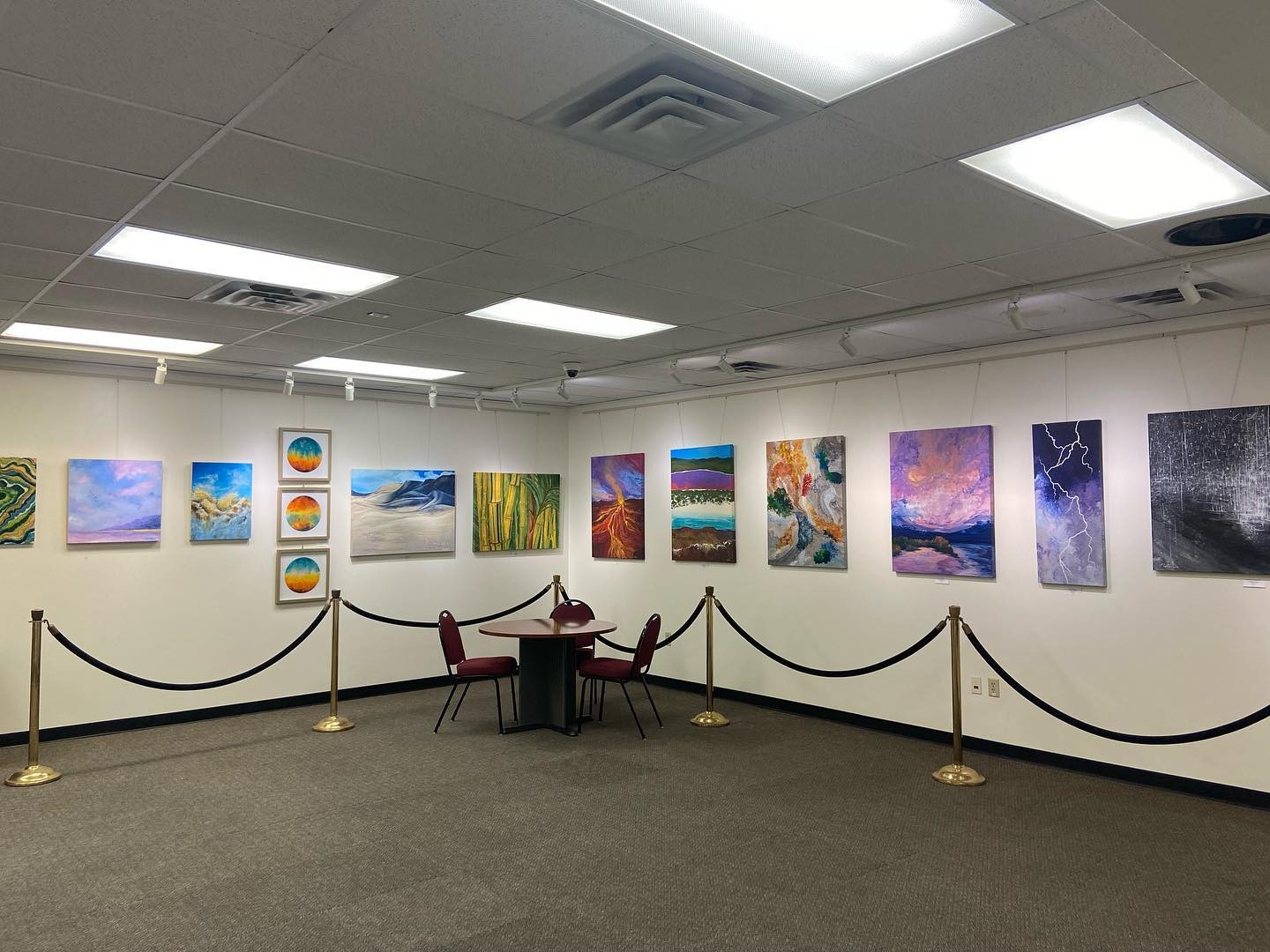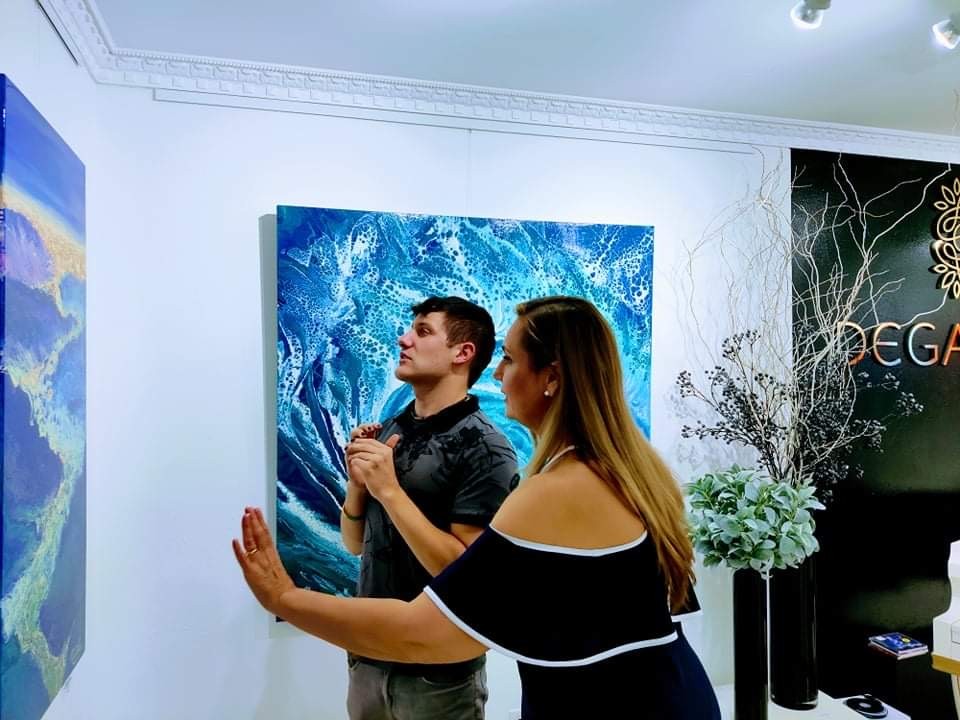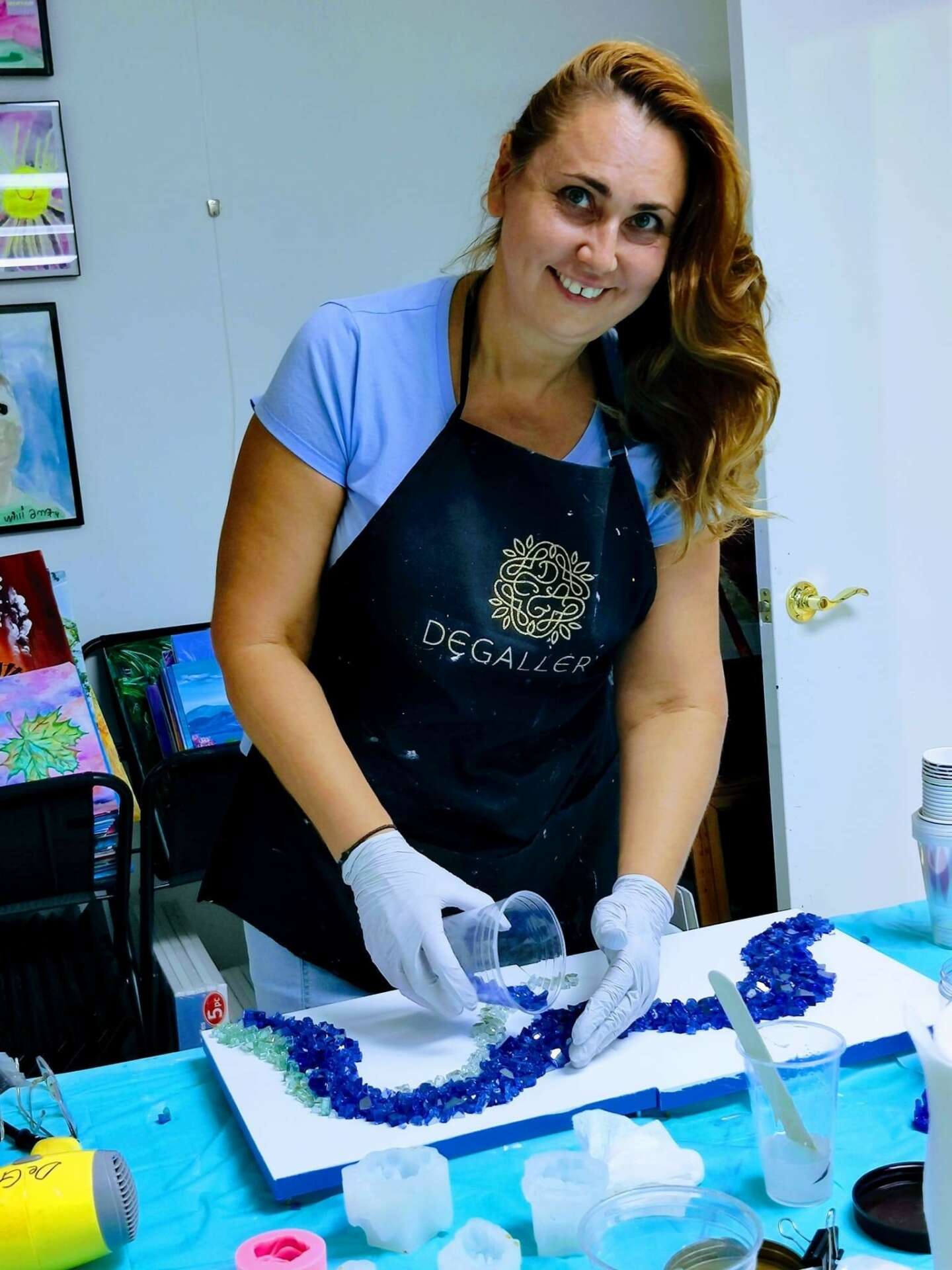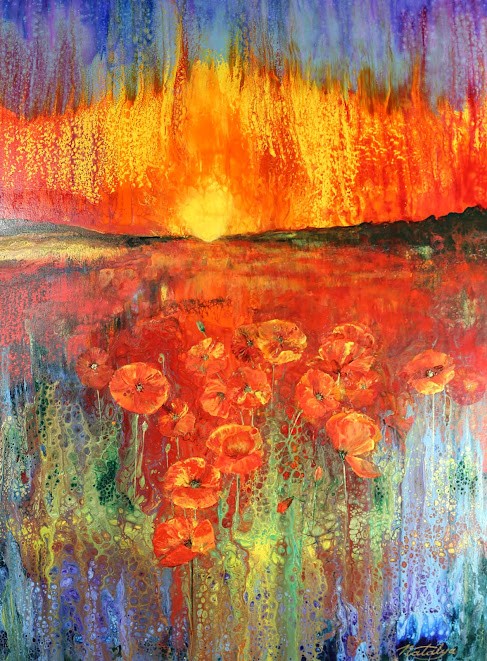We caught up with the brilliant and insightful Natalya Holbrook a few weeks ago and have shared our conversation below.
Natalya, thanks for taking the time to share your stories with us today When did you first know you wanted to pursue a creative/artistic path professionally?
Since I was a little girl I liked to draw what I saw. With great persistence, I copied old postcards. I adored lessons in fine arts at an art school, so I decided to continue my studies at the Kryvyi Rih State Pedagogical Institute. There were no artists in my large family, and no one thought that my hobby could become my profession – a teacher of drawing and drafting. While studying at the institute, I also worked in a design art workshop. The studio brought together artists of different levels. There I learned how to design tablets, signboards, wall paintings, and Petrikovka folk paintings. After graduation, I wanted to go to work in a school. But life worked itself out in its own way.
In America, I worked in enterprises not related to art. But painting has always been important and I worked on it in parallel. I attended exhibitions, museums, and galleries. In 2006 I went to work in a Russian school. I taught painting classes for children and adults. I also organized master classes using different materials. But only in 2021, I decided to completely go into painting and art


Natalya, love having you share your insights with us. Before we ask you more questions, maybe you can take a moment to introduce yourself to our readers who might have missed our earlier conversations?
I find immense joy and inspiration in the natural world that surrounds us. Nature, with its rhythmic flow, vibrant colors, and dynamic forms, serves as the driving force behind my artistic experimentation. Though I am a self-taught fluid acrylic artist, my passion for capturing the beauty of the sky, water, and earth’s minerals knows no bounds. These elements provide me with a natural color palette that I incorporate into my paintings, creating artworks that evoke a sense of calmness and inspiration.
Every piece I create begins with a fusion of everyday life and my boundless imagination. I take these abstract concepts and mold them through my emotional responses and evolving interests. Inspiration comes to me from all styles and genres of art, fueling my creative process, which involves building up multiple layers of paint and employing techniques like swiping, scratching, and gestural brushwork.
Creating art is an integral part of my existence. I seek out my favorite places, immersing myself in their beauty, observing and sensing every detail, and drawing inspiration from the natural world. In my paintings, I strive to capture fleeting moments in time, infusing them with vibrant colors and intricate details that resonate deeply with the viewer.
Through my art, I aim to celebrate life. I want to offer viewers an opportunity to appreciate the magnificence of light, form, and color, allowing them to make new and unexpected insights. My intuitive style is a reflection of my innermost feelings and perspectives on the world, making the process of creating art intensely satisfying and liberating.
In essence, my artistic journey is driven by a profound love for nature and a desire to share its beauty with others. I find solace and purpose in exploring the interplay of colors, the harmonious dance of forms, and the ever-changing essence of the world around us. Through my paintings, I hope to inspire, evoke emotions, and provide a gateway to a world where nature’s wonders can be experienced anew.



What do you find most rewarding about being a creative?
Engaging in the creative process can be an ongoing journey of self-discovery and personal growth. I often push myself to explore new ideas, techniques, and concepts, which can lead to a deep sense of satisfaction and fulfillment as I expand my skills and artistic horizons. The ability to express myself through chosen mediums is incredibly fulfilling. Creating something that reflects my thoughts, emotions, or ideas allows me to communicate and connect with others more deeply.



In your view, what can society to do to best support artists, creatives and a thriving creative ecosystem?
To best support artists, creatives, and a thriving creative ecosystem, society can take several steps:
Recognition and respect: Society should recognize the value and importance of art and creativity. Artists should be respected as professionals and their contributions to society should be acknowledged.
Funding and grants: Governments, organizations, and individuals can provide financial support through grants, fellowships, and funding programs specifically designed for artists. This can help alleviate financial burdens and provide resources for artistic projects.
Education and accessibility: Art education should be accessible to all, regardless of socio-economic background. Schools and communities should provide opportunities for artistic development and training from a young age. Additionally, resources such as art supplies, studio spaces, and equipment should be readily available.
Collaboration and networking: Society can facilitate collaborations between artists, creatives, and other sectors such as technology, science, and business. This can lead to innovative and interdisciplinary projects that benefit both the artistic community and society as a whole.
Fair compensation and intellectual property rights: Artists should be fairly compensated for their work. Copyright laws and intellectual property rights should be upheld to protect artists’ creations from exploitation.
Exhibition and promotion: Society can support artists by providing platforms for them to showcase their work. Galleries, museums, festivals, and online platforms can be instrumental in promoting artists and their creations to a broader audience.
Cultural policies: Governments and institutions can develop cultural policies that prioritize and support the arts. This can include funding initiatives, tax incentives, and policies that foster a vibrant artistic ecosystem.
Public engagement: Society should actively engage with the arts by attending exhibitions, performances, and cultural events. Supporting local artists and creatives can help sustain a thriving artistic community.
Mental health support: Artists often face unique challenges and pressures. Society should provide mental health support services tailored to the needs of artists, including access to therapy, counseling, and resources for well-being.
Changing attitudes: Society should challenge stereotypes and misconceptions about art and creativity. Recognizing the diverse forms of artistic expression and the cultural, social, and economic contributions of artists can foster a more inclusive and supportive environment.
Overall, creating a supportive environment for artists and creatives requires a combination of financial support, education, collaboration, recognition, and appreciation from society at large.



Contact Info:
- Website: https://www.etsy.com/shop/ArtStudioNatalya
- Instagram: https://www.instagram.com/artstudionatalya/
- Facebook: https://www.facebook.com/ArtStudioNatalya
Image Credits
Alena Obergan


